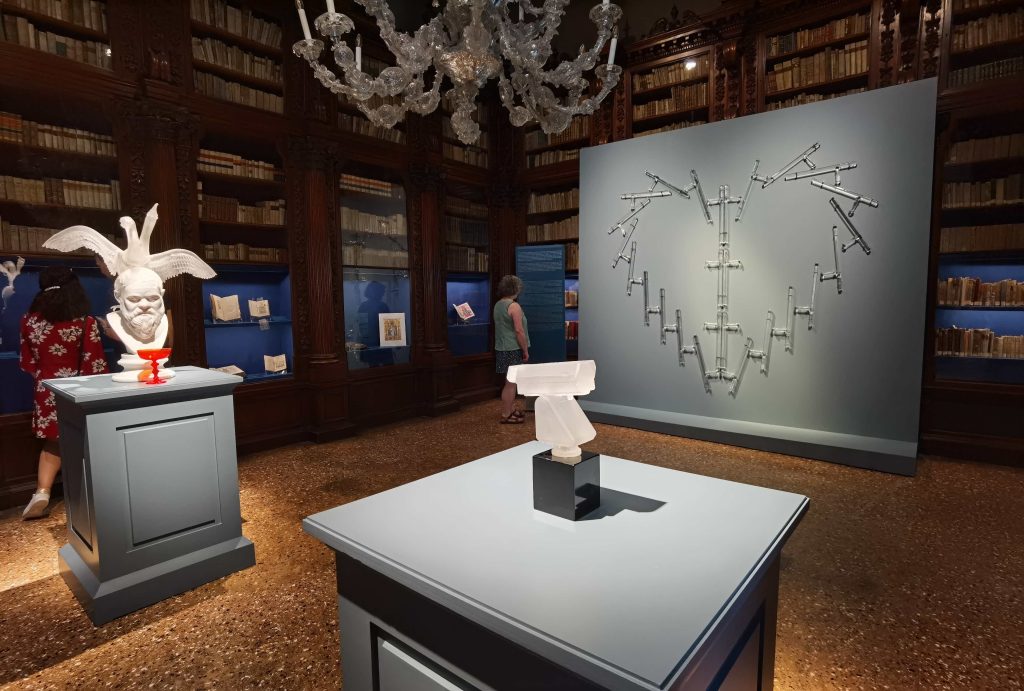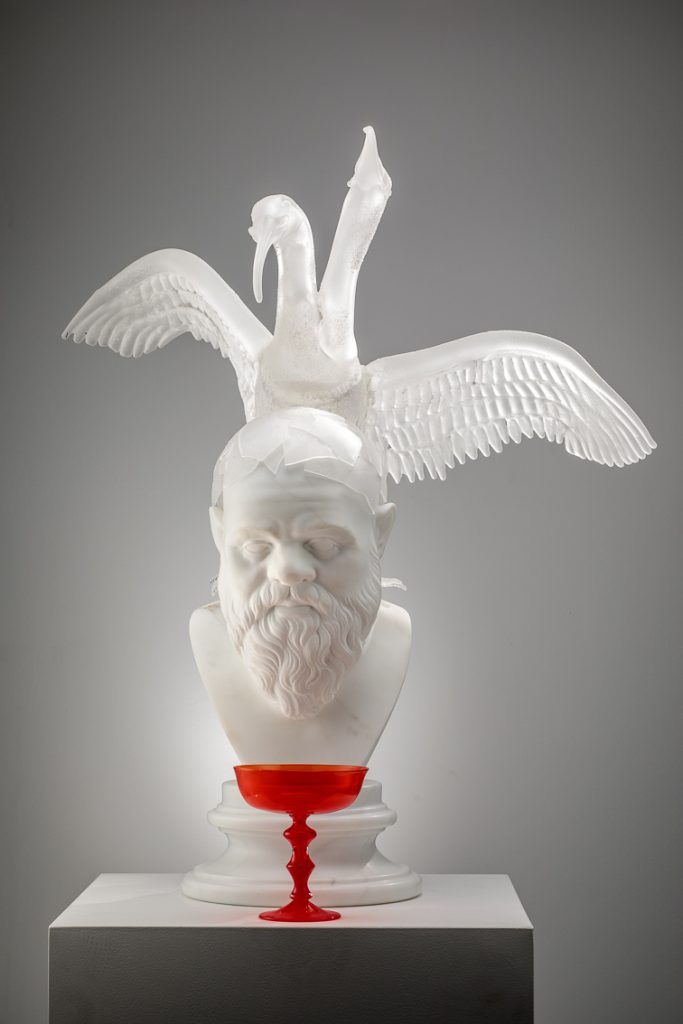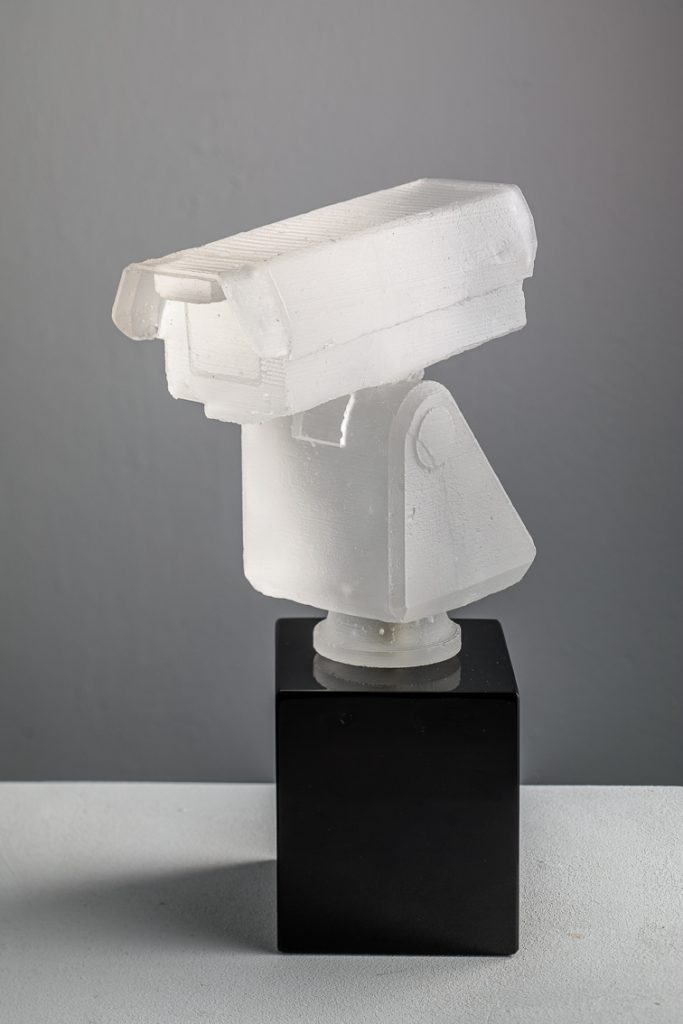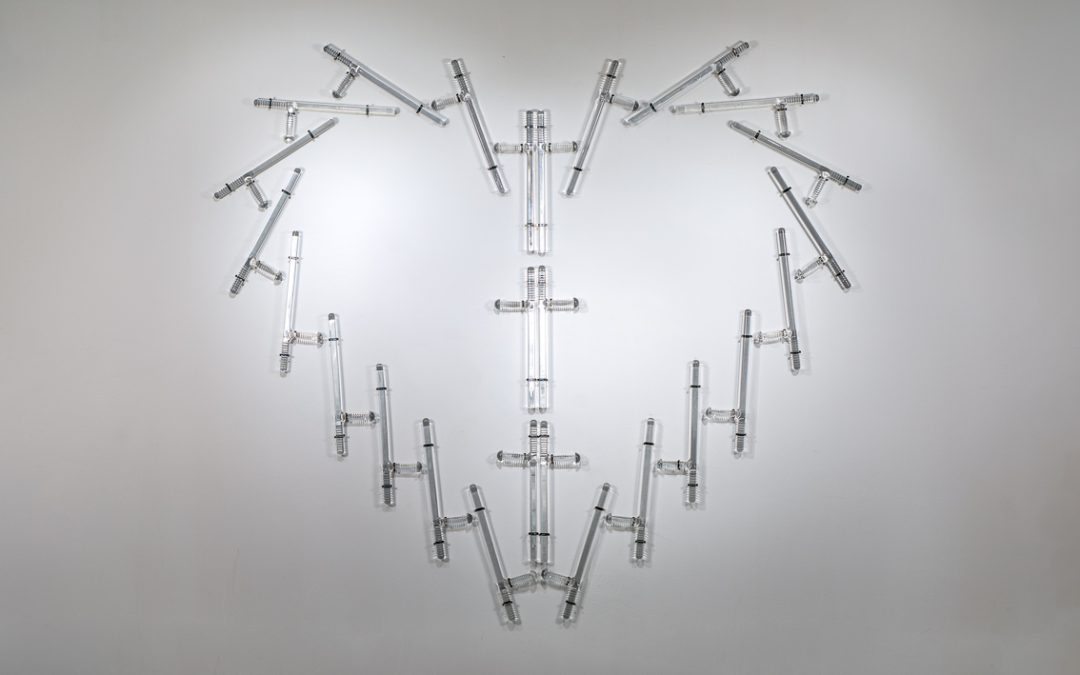How do we define Justice? A new exhibition at the Correr Museum in Venice investigates how the image of Justice as a virtue has changed over the years in artistic depictions from ancient times to our present day. Fondazione Berengo is delighted to have contributed several artworks to the exhibition all made in Berengo Studio.
The new group show, IMAGO IUSTITIAE, stretches across time in search of Justice, with a weaving path that demonstrates the evolution of how artists have imagined this powerful concept over the centuries, from an allegory or virtue to famous moments like the Judgement of Solomon or the Last Judgement. Curated by Marina Mattei the three artworks, by the artists Ai Weiwei, Kendell Geers, and Koen Vanmechelen, are the only contemporary artworks in the show, which mainly focuses on more historical collections.

In the words of MUVE President Mariacristina Gribaudi the exhibition “deals with the theme of justice and how the expressive and didactic codes related to this topic have been visually translated by artists in different eras. Art, therefore, once again confirms itself not only as an expressive virtuosity linked to aesthetic beauty but also as an important testimonial of our own history.”


The three contemporary artworks are featured in the first room of the show and act as a vivid introduction to the historical retrospective mediating on the theme of art and justice. Despite their differences, the sculptures work together to establish a new narrative within the space. Ai Weiwei’s Survelliance Camera presents a new interpretation of the Chinese artist’s original artwork of the same subject in marble. The material of glass brings with it its own history, a new lens that transfers new questions about the connotations of transparency that in the sandblasted finish are once again obscured.
For Belgian artist Koen Vanmechelen the concept of Justice looks back to a more classical template, with the artist using the image of the Greek philosopher Socrates as a base for his contribution to the exhibition: Socrates Temptation. To this base in marble the artist then embellished the historical portrait with handblown glass details, the shattered shards of a broken egg sit upon the philosopher’s skull together with an Ibis – an Ancient Egyptian symbol linked to the god of wisdom – while a deep red cup handblown in Murano glass presents the poisoned chalice from which he met his untimely end.
Meanwhile both sculptures sit in the shadow of South African artist Kendell Geers’ large-scale mounted installation Cardiac Arrest which hangs upon a makeshift wall in the museum space. The image from afar is familiar, a human heart, a symbol of love and peace. On closer inspection a more sinister perspective emerges as the viewer comes to realise that this image is constructed from glass police batons, an object imbued with a history of violence and hate. In an interview with SCULPTURE magazine Geers observed how he first began working with police batons in the early 1990s after returning to South Africa from exile:
“Nelson Mandela had just been released, and I was thinking a lot about Theodor W. Adorno’s statement that “To write poetry after Auschwitz is barbaric.” At the time, I firmly believed that this also applied to apartheid. I left South Africa in 1988 and spent 1989 in New York working for Richard Prince. I was struck by the difference between the brutal political reality that I had lived through, and the luxury of what art had become. I understood that Prince was translating American popular culture into high art and wondered if I might not be able to translate the language of protest into works of art.
The memory of being chased and beaten by the police with rubber batons was still fresh on my skin, so I began using the same batons to create minimalist mandalas. These works, called “Signs Taken For Wonders,” represent the exorcism of my painful experiences and their transformation into art. A moss or glass police baton is intrinsically useless as a weapon, but as a work of art that fragility multiplies meanings, referencing climate change and activism.”

OFor those who cannot make it to Venice in time we have good news. You can visit the exhibition virtually! Thanks to technology a virtual tour of the exhibition is available for free online – why not have a peruse today? Simply follow the link here.
For more information about the exhibition and to organise your visit head to the Fondazione Musei Civici di Venezia and Museo Correr website at the link here.
IMAGO IUSTITIAE
Curated by Marina Mattei
🗓️From 10 June to 22 October 2023
⏰10.00 – 18.00 (last entrance at 17.00)
📌Museo Correr
San Marco, 52 Venice, Italy 30124
Images courtesy of Francesco Allegretto and the Museo Correr.


Recent Comments